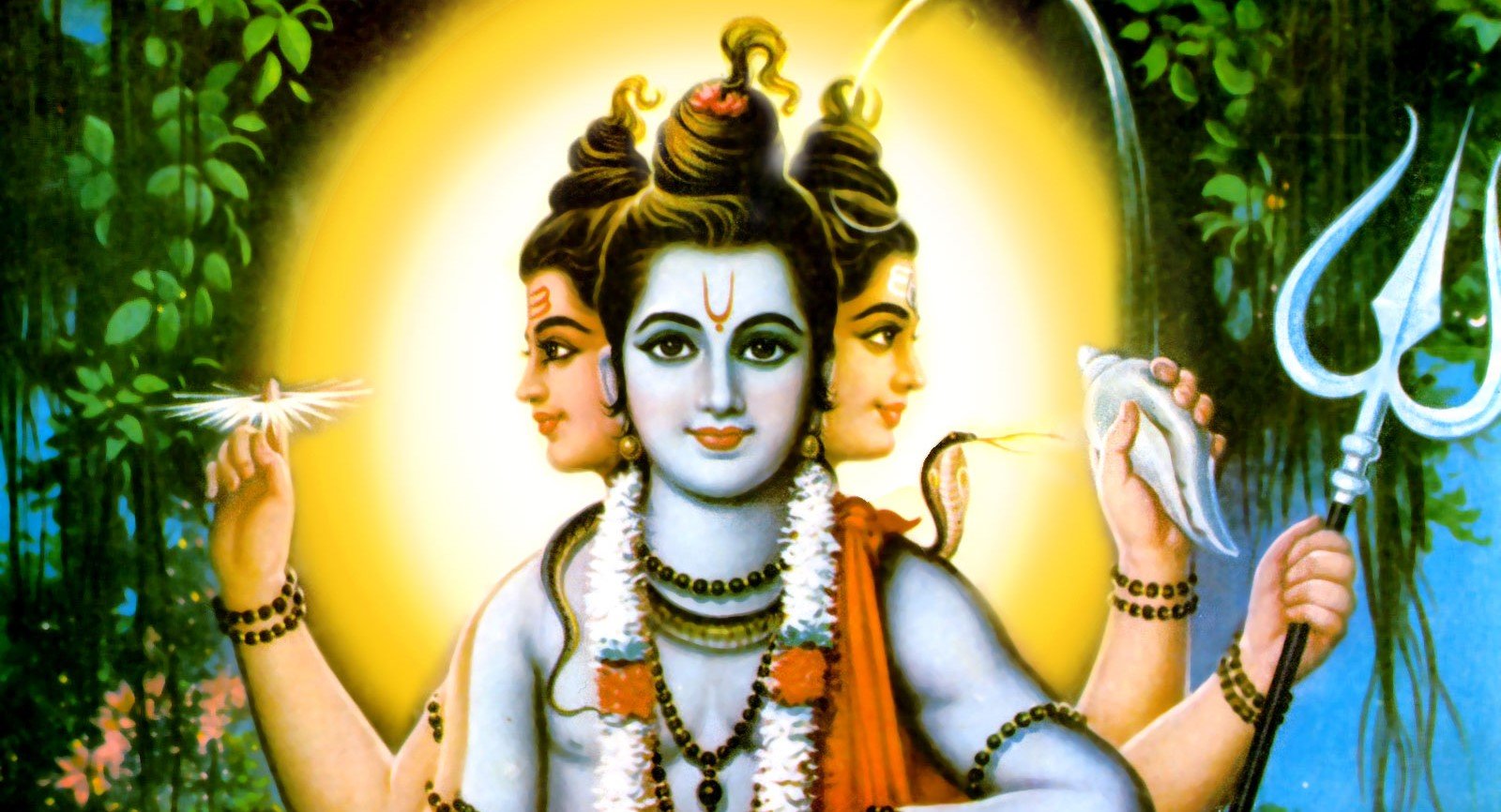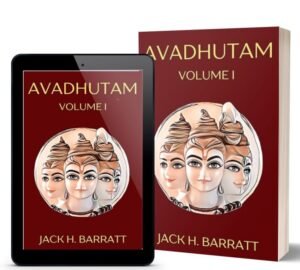Today, Lord Dattatreya is a multifaceted phenomenon known by many different people in many different ways. For some people, he is an interesting historical figure to be studied. For others, he is the gurus of all gurus and a figurehead in their spiritual tradition or lineage. For those native to some selected states in India, he is a common ishta deva and a deity to be worshipped ritualistically. Finally, for a few beings, he is a more of a principle, a presence, and a symbol of nature and life itself.
In this article, we will take a look at Lord Dattatreya as man, guru, god and principle.
THE MAN
The birth of Dattatreya the man is something that is surrounded by many layers of mythology. The traditional, and most popular, narrative for the birth of Lord Dattatreya is that one day, his mother, Anasuya, was left at home alone whilst her husband, Rishi Atri, went into the forest to perform his spiritual practices. During this time, the three Hindu Goddesses, Lakshmi, Saraswati and Parvati, had become increasingly jealous of the spiritual power that Anasuya developed by serving her husband. Therefore, they compelled the Hindu trinity of Brahma, Vishnu and Shiva, to come to Earth and test her purity.
The trinity arrived at her house in the guise of wandering monks and begged her for food. After she agreed and invited them in, the monks added a strange stipulation to their request: that Anasuya must serve the food to them naked. Knowing that it was considered adharmic to deny the request of one’s guests, Anasuya began considering her options. Quickly, she decided that if she were able to see the monks as babies, then she could happily feed them from her own breast. As soon as she had this thought, the monks shrank down into babies and she began to feed them.
When Rishi Atri returned home and found his wife feeding the children, he wondered who they were. In this moment, the babies assumed their true forms as Brahma, Vishnu and Shiva. Thoroughly impressed by the purity and power of Anasuya, the gods offered to grant her a boon. Anasuya then requested that the trinity be born to her as her own children. The trinity acquiesced and three avataric children were born: Chandra, who was an emanation of Lord Brahma; Durvasa, who was a representation of Lord Shiva; and Dattatreya, an incarnation of Lord Vishnu. With time, Chandra and Durvasa departed to fulfil their own destinies. Dattatreya remained and revealed his true form as singular, supreme avatar containing the essences of Brahma, Vishnu and Shiva.

From his childhood, Dattatreya clearly manifested all the signs of his tremendous spiritual stature. He was often found meditating in graveyards, where he would the draw the attention of both seekers and sages alike, who would come to test his wisdom and power. None were left wanting when pure spiritual knowledge flowed like an unbroken stream from the young avadhuta. At this time, whilst he was still a child, his role as a guru was initiated.
THE GURU
Lord Dattatreya is primarily associated with his role as a guru. The names ‘Gurudeva Datta’ and ‘Dattaguru’ both refer to this aspect of Lord Dattatreya as not just being any old guru, but as the Guru of Gurus, and the perfect personification of the guru principle.
Lord Dattatreya’s reputation as being the ultimate guru is clearly warranted by the fact that he is respected as the original, or adi, guru in not just one but many traditions. These traditions include the avadhuta tradition, the nath tradition, the aghora tradition and also the shri vidya tradition that worships Goddess Tripura Sundari as the supreme reality.
Gurudev Datta has also provided one of the most revolutionary teachings on the nature of the guru principle within a discourse that he had with King Yadu. In this discourse, Lord Dattatreya speaks about the twenty-four gurus that he learnt from on his own his path. However, the interesting thing is that none these gurus fit the traditional picture of being a sage with a long white beard; rather, they are all aspects of the natural world. From the element of earth, to an elephant, to a prostitute that he encountered—all of these gurus were simply parts of life that he observed and managed to learn something substantial from.
When it came to him playing the role of guru himself, Lord Dattareya was unparalleled at empowering and raising his disciples up to the same level as himself. From Vishnudatta Sharma, to Kartavirya Arjuna, to Parashurama, to Alarka, to Rajarishi Narada, all of these great beings were taken to the highest spiritual level whilst praising the name of Datta Prabhu.
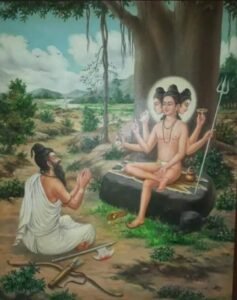
If one spectacular incarnation was not enough, Lord Dattatreya emerged also in Kali Yuga in the forms of an ongoing succession of Datta avatars. This sequence started with the advent of Shripada Shri Vallabha, and then continued onwards through Narasimha Saraswati, Swami Samarth of Akkalkot, Manik Prabhu, Shirdi Sai Baba and many other masters like Tembe Swami, Gajanan Maharaj, Shankar Maharaj and Bhagavan Nityanada, who were all thought to be amshas representing the Datta principle in the world.
Today, the tradition of Dattagurus is alive and well with the presence of Mohanji, a contemporary Datta avatar who has fully modernised the teachings of Datta tradition and brought it to the Western world.
THE GOD
Lord Dattatreya is also worshipped as a deity, primarily in the Indian states of Maharashtra, Karnataka, Andhra Pradesh and South Gujarat. These states are also the primary home of the Datta Tradition, as almost all of the Datta avatars were born, and later operated, in these states. Thus the worship of Lord Dattatreya is sustained not just in designated Dattatreya temples, but also in maths dedicated to the likes of Narasimha Saraswati and Swami Samarth of Akkalkot. Many of these maths are located in places where these masters stayed, performed spiritual practices and spent time helping and guiding the locals.
The form of Dattatreya that is worshipped in temples is made up of the three heads that represent Brahma, Vishnu and Shiva. Traditionally, Brahma is seen as representing the principle of creation, Vishnu, preservation, and Shiva, destruction. Beyond the mythological story of his birth, the deified form of Lord Dattatreya is meant to represent the supreme reality that contains these three processes within itself and thus transcends them.
Dattatreya is also depicted with six arms, with each arm holding a mala (rosary), a kamandalu (water pot), a damaru (a drum), a trishul (trident), a shankh (conch), and a chakra (discus-like weapon).
– With the mala, Lord Datta counts those who are connected to him, and liberates each of them in turn.
– In his kamandalu, he carries the nectar of pure spiritual knowledge, which he feeds to those who are thirsty for wisdom.
– When he plays the damaru, he awakens and calls all of those souls who are ready to ripen up and begin walking the spiritual path.
– The trishul is used a weapon to the pierce the egos of those who have entered the spiritual path, and also those who are set to meet punishment for their accrued negative karmic deeds.
– When he plays the shankh the sound of ‘AUM’ is produced. This sound represents the root sounds of existence, which is initial vibration of energy that occurs when pure existence enters the stage of manifestation.
– Finally, the round, spinning form of the chakra represents the circular movement of time, through which all beings are gradually brought through the stages of veiling, unveiling, and finally, complete liberation.
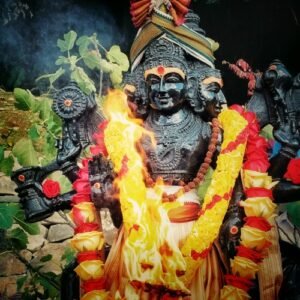
In his deified form, Lord Dattatreya is also accompanied by four dogs, each of whom represents one of the four Vedas: Rigveda, Atharvaveda, Yajurveda and Samaveda. Through each of these Vedas, the knowledge of sanatana dharma has been passed on and preserved through time. The lives and teachings of Datta avatars have continued to preserve dharma in the post-Vedic era through their lives and teachings.
Behind Dattatreya stands Kamadhenu, the celestial wish-fulfilling cow, who represents the abundant life-giving power of nature. Behind Kamadhenu, stands an audumbar (fig) tree, which is also known as wish-fulfilling tree and a permanent object of scenery in the life of Lord Dattatreya and his avatars. The audumbar tree has had a holy status since the time of the Vishnu avatar, Lord Narasimha, who healed his burning finger in the body of an audumbar after a fight with the demon Hiranyakashyapu.
THE PRINCIPLE
Beyond the man, the guru and the god, Lord Dattatreya is also a principle that represents truth, naturalness, non-violence, unity and the preservation of dharma. It is the Datta principle that connects Lord Dattatreya with the avataric beings that came before him, and the avataric beings that still take birth on his Earth in order to keep the flame of dharma continuously burning.
Above all, Lord Datta represents nature and the natural flow of existence. We all have a seed of naturalness within us. This naturalness is connected to our own soul, which is the drop in us that connects us with the infinite ocean of consciousness. When we connect to our soul and listen to the voice of our soul, we manifest ourselves in a perfectly unique, organic and creative way.
The message of the Datta principle is to connect to and cultivate that which is the most real and true within ourselves. By being true to ourselves, and by being unashamedly original, we discover what our individual dharma is in this life. The supreme dharma is always to understand our nature as the non-dual reality that manifests itself as the illusory appearance we call life. Alongside this dharma, we have a duty to ‘do our jobs’ and live our purpose fully in this world.
When Kartavirya Arjuna attained liberation and became a jivanmukta under the sage guidance of his guru, Lord Dattatreya, he was then guided to go back to his role as king and rule his kingdom in a way that promoted the flourishing of dharma. Lord Datta’s path is never abstract. Lord Datta’s path is never about running away or becoming something else. The path of Lord Dattatreya is about discovering who we are on the deepest level and then living from that point in order to add value to the world.
Ultimately the Datta principle is the principle of life itself when it is lived in a natural, spontaneous and free mode. A life lived in such a way becomes a crystallised manifestation of dharma.
Dharma is Datta; Datta is Dharma.
Avadhuta Chintana Shri Gurudeva Datta
May we harmonise our minds with the Supreme Guru of Gurus, Lord Dattatreya.
To learn more about Lord Dattatreya’s teachings as a guru, check out the book of Lord Datta’s non-dual teachings: Avadhuta Gita: The Reality-Path of Lord Dattatreya
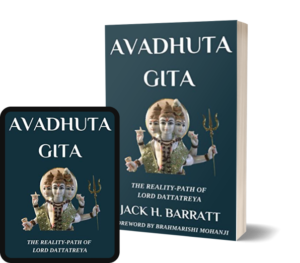
To discover the path that is based on the Datta principle, check out the Avadhutam books
To learn more about the lifetime of Lord Dattatreya and his disciples, stay tuned for the upcoming book: Shri Datta Mahatmya: The Life & Teachings of Lord Dattatreya, which will be published on the auspicious day of Datta Jayanti 2024 (14.12.2024).


